HIDDEN WAR
Stories from the trenches of the First World War, collected from the Art Gallery of New South Wales' archive
A popular recruitment poster for the Great War shows a map of Australia with Sydney renamed Nietscheburg and Melbourne Zeppelinburg.
The message: ‘Australians arise! Save her from this shame!’ From a population of less than 5 million, 416 809 Australians eventually enlisted. Of these, 60 000 were killed and 156 000 were wounded or taken prisoner.
Yet after the war, the men and women who had just gone through hell were expected to take up from where they had left off, to put the past behind them and get on with life.
Poet Mary Gilmore summed up the nation’s expectations:
Cover thy wound, fold down
Its curtained place;
Silence is still a crown
Courage a grace.
This exhibition is about the hidden toll of the First World War upon three artists: the photographer Cecil Bostock, the painter Weaver Hawkins and the sculptor Dora Ohlfsen. Their stories throw into relief the complex and ambiguous experience of the war for those who fought and nursed during it, and who made art out of it. The exhibition also tells the story of the war from ‘hidden’ or little known archival documents held in the archive of the Art Gallery of New South Wales.
◼
Cecil Bostock:
the fighting photographer
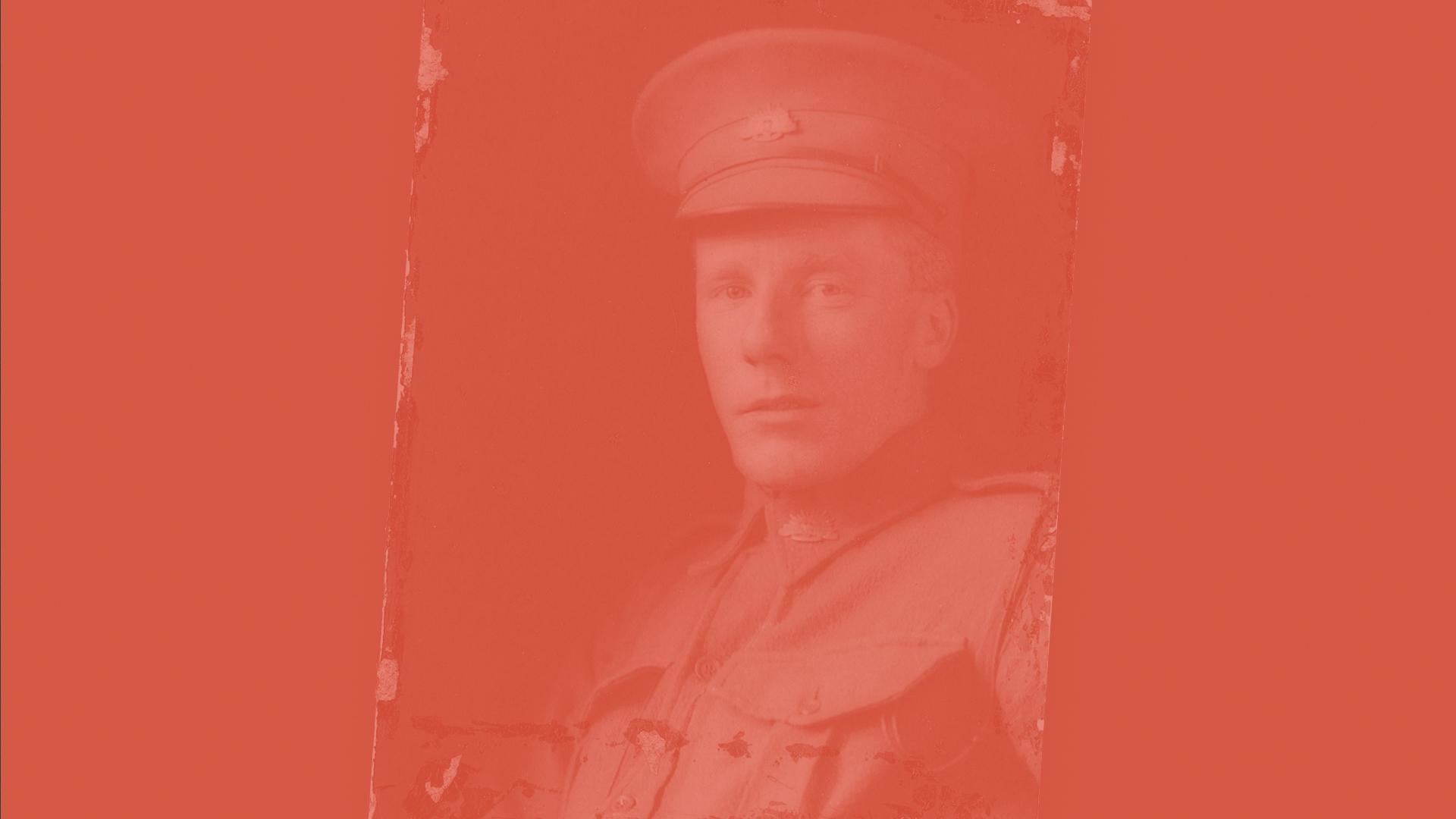
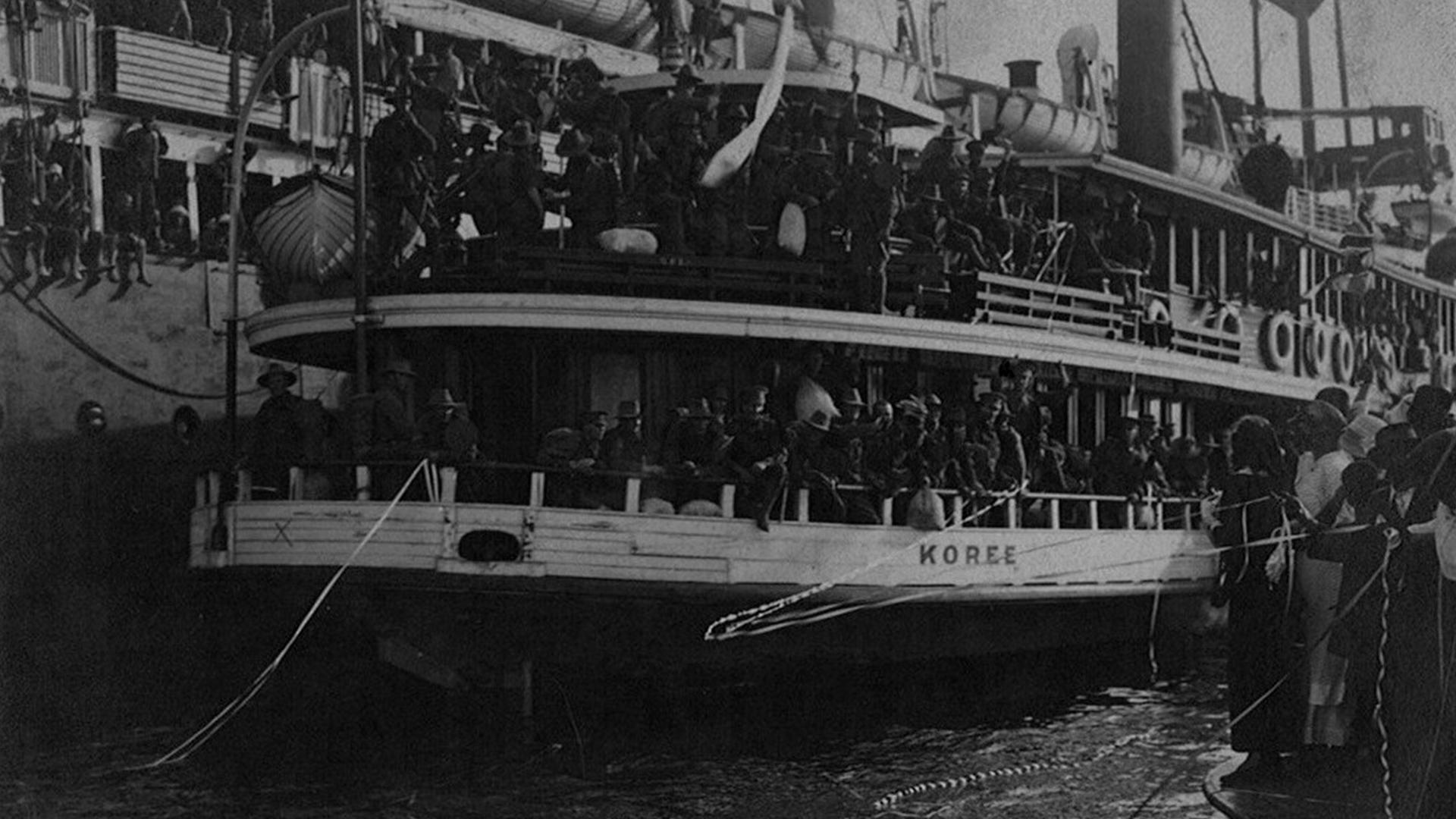
Cecil Bostock was 29 when he enlisted with the Australian Imperial Force on Valentine’s Day 1917.
He was relatively old for a new recruit, but his diary entries from the beginning of his military career abound with the enthusiasm and naivety of a young man off to see the world.
Cecil began his journey to the Western Front late in the night of 1 August 1917 when he boarded the 11.30pm train from Liverpool, in Sydney's West, to Central Railway Station. There he assembled for the march to the troopship Miltiades, which was to carry 1020 young Australian men to the War.
Though it was past 3am on a cold winter’s morning by the time they boarded the ship, the young men’s spirits were high, buoyed no doubt by the presence of many of the ‘fair sex’ (‘are you there Bill?’, ‘where’s Johno?’, ‘where’s my B – hat? Some cow’s taken my coat’). As they passed through Sydney Heads on the Miltiades, boats with well-wishers flocked around the ship in farewell.
As it was for other young Australians, the outward journey from Australia was almost as monumental for Cecil as the war itself. The long cruise to Europe inspired artistic reflections in the young photographer. Wellington Harbour ‘filled me with a longing to stay here & sketch’ and waterspouts on the high seas were a source of fascination.
Writing of the clouds off Panama he noted that ‘they tower in pyramidical forms right to the very top of the heavens – the edges aglow with soft sunlight. I hasten to get my camera – for I cannot miss the opportunity of getting a snap.'
He also took interest in a camouflaged ship in the convoy:
‘She is a weird conception.' he wrote. ‘Being painted in cream, light grey, dark grey and black – one side representing a huge wave, with the splash painted around the funnel and upper decks, the other side representing a whale half out of water. This is the most weird affair I have ever seen – quite a "futurist boat".'
This was Cecil's introduction to the mechanised world of total war. When he finally arrived in England he was struck by the scale of the Empire’s war industry, and he described with wonder that ‘the chimney stacks are belching forth flame & smoke... Now we see a huge blaze of light. The door of a vast furnace is opened – molten metal is poured from its vitals, and the splashes and hissings penetrate the inky blackness of the night... great factories were at it hammer and tongs, ever working the very symbols of Industry – or necessity.'
Cecil joined the Western Front in the final stages of the war, when the Allied powers were beginning a great push towards the German Hindenburg line – the last and greatest of Germany’s defence systems. He served with the rank of Corporal as a gunner in the 39th Battery of the 10th IAB. In addition to the daily duties of trench life, he was required to plan barrages, analyse maps and plot German positions, and on one occasion he worked as an intelligence officer.
Camped at Heytesbury in south eastern England, on the eve of his embarkation for France, Cecil reflected on his mission to come. ‘We are in good fettle,' he recorded, ‘and look forward to the day when we get our orders to proceed to the front, and join in the throng, who make the noble army of the British Empire, who are fighting for right, and the conquest of the Prussian Military Domination. To restore to those unfortunate peoples their liberty, and to crush the ravaging octopus of the unscrupulous Hun organism.'

Cecil’s belief in the nobility of war was quickly shattered at the front. ‘I have seen tanks which have been hit, & the ammunition exploded inside,' he wrote of the aftermath of one sortie, ‘the whole of the interior being a charred & twisted mass of metal – the inmates sharing a similar fate.' Neither did his faith in the capacity of the class-based British Army long survive combat. He thought British officers were 'inclined to be a snob & would never think of associating with the ordinary rank & file… We are known as "those beastly Australians".'
At times the absurdity of the war wore heavily on him and he became critical of the military hierarchy. 'We are supposed to be modern & have modern methods,' he wrote. 'The army methods seem to be 20 years out of date – and practical methods are tabooed. I am not grousing – thousands of men will bear me out in this – years of valuable time, millions of pounds of money – are wasted in the army on absurd rules & regulations... The difference in treatment between men and officers is ridiculous to say nothing of being unjust.'
This disillusionment was a common response to the harshness of life on the front. After one battle Cecil’s unit commandeered a German HQ, which he described as ‘in a state of chaos – and filthy to the extreme. Rubbish had not been cleared out – the scraps of food had been left until it was in a state of decay. The passage had been used as a urinal. The stench was almost unbearable – no air seemed to be in place’. Even quiet days were likely to be punctuated by artillery fire.
‘Every shot, the whole show would fairly rattle & lumps of dust were dropping off the roof of the dugout. Another sleepless night, & a day’s work ahead. That made 62 hours without a sleep.'
This was but one of the privations Cecil endured at the front. His unit was shelled a number of times with mustard gas. Another time he was wounded by a shell blast, narrowly escaping with his life. Yet in spite of the dangers, he found time to sketch and occasionally take photographs of life on the front. Like many other soldiers, this act of recording in words and pictures may well have helped Cecil make sense of his experiences.
On several occasions his position was strafed or bombed by German aircraft, which both fascinated and terrified him. He recorded ‘the singing sound of the bomb flying through the air, then the crash of the burst. The bang of the anti-aircraft guns & the rat tat tat of our machine guns made the night hideous for an hour or so.'
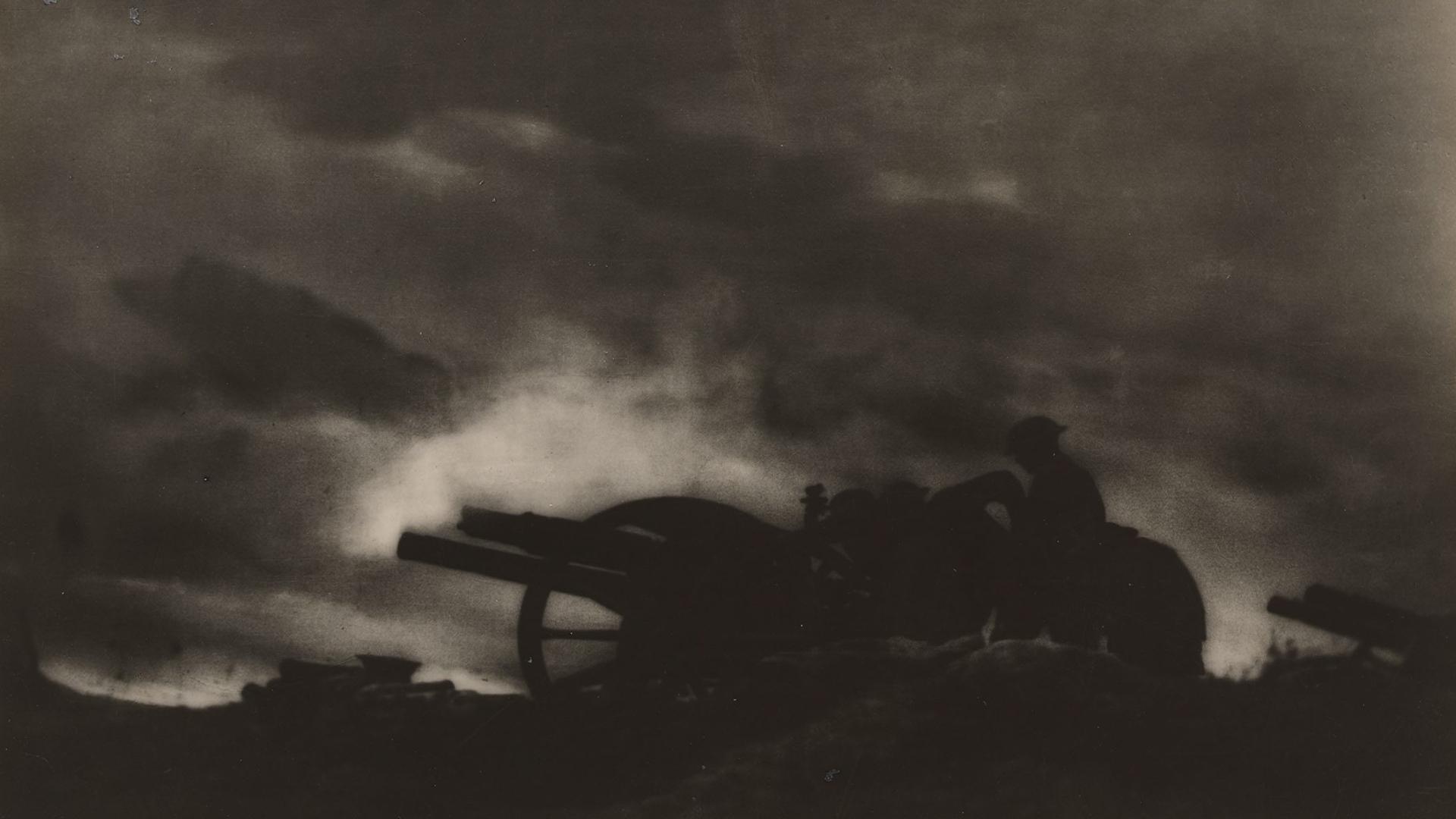
As the war drew to a close Cecil’s unit pursued the retreating German forces. As they liberated German-occupied France they made often gruesome discoveries. Further along the Hindenburg line he discovered tunnels in which it was rumoured – incorrectly – that the Germans were rendering fat from human bodies. But at Montbrehain he found 30 French civilians, hysterical from living in a tunnel filled with human waste.
Then, at Premont he found civilians in German hands. ‘The young boys & girls that were old enough to work – had been taken away…,' he observed. ‘The girls had been forced to cohabitate with the German officers & there were many children born to these women in consequence. They cried when we came through & poor as they were – would insist on us sharing their meagre faire.'
At a place called Banidival Farm Cecil received ten days' leave in Paris. That was the last he saw of actual fighting. ‘We are informed that hostilities are to cease on November 11th at 11am,' he wrote on his return’. ‘Everyone takes the news quietly – nobody seems to be excited at all – & many would not believe it. After a few days… my work was finished. I now began to realise that I had pulled through some tough times without any serious mishap & was truly, very thankful.'
Cecil’s last acts in the war were celebratory. After the armistice his unit remained in France, where he met an American sergeant who was an excellent pianist. They found a piano and played and sang in their spare time, forming a jazz band to entertain the troops. He organised a concert party, given in the Hall of Le Cateau.
In January 1919 Cecil was relieved from his battalion. 'At last my “Blighty” leave came through & one bitter cold morning in January I left the Brigade – never to return,' he wrote. 'Having reported at Headquarters – I am ready to proceed wherever they deem fit to send me. I was offered a position in the Photographic Section which I gladly accepted as I thought this would give me an opportunity of seeing the Greatest City in the world – London.'
In that year he exhibited the photograph Day breaks-cold-shrieking-bloody at the Photographic Salon in London. The Bulletin carried a notice about him on 14 August 1919:
‘Corporal C. W. Bostock, who was with the Australian Field Artillery, is at present exhibiting at the Camera Circle Studio a set of 54 watercolors, all them painted while he was on active service, and some of these while he was under fire. His gun-pit was his studio, and his artist’s material was carried in his haversack. The energetic Digger is from Sydney, and was engaged on commercial art work before he heard the call.'
Broody and atmospheric, Day breaks-cold-shrieking-bloody carries the emotional weight of Cecil’s experience in the trenches. Soldiers are silhouetted against the sky and he has allowed what was generally considered to be a technical imperfection – halation, or the prominent halo of light particles around the gun – to remain for the sake of a dramatic image. This light patch is ambivalent; it might be the breaking dawn or smoke from a recently discharged gun. Australian critic Alek Sass thought it ‘a picture and a photograph beyond criticism … Bostock’s emotional vision rises to its highest in this picture.'
Thought to be his only exhibited photograph from the war, in Day breaks-cold-shrieking-bloody Cecil found visual poetry in the horror of the trenches.
◼
Weaver Hawkins:
the ardent pacifist

On the morning of Saturday 1 July 1916, in the Upper Somme Valley on the Western Front, the young artist Weaver Hawkins waited for the arrival of the day with the three signallers who served under him.
As morning dawned, a perfect summer morning with a ‘clear blue sky’, a fire summons was given and Weaver's regiment began to climb out of their trenches.
Thick mist from the large scale use of gas the night before surrounded them. The enemy opened fire in full. One of the three signallers was hit as soon as he went over the top. Weaver sent him back to the trenches. A short while later he was hit himself by a bullet through the calf of his right leg, but he remembered feeling no pain.
Then followed a great explosion, and Weaver felt a blow to his right shoulder. Schrapnel had hit him in the armpit and torn the whole side of his arm open. The signaller at his side fell on his face. Weaver saw a gap in the German barbed-wire entanglement. He stumbled through it and fell into a big shell hole. He called out to the third signaller, who was killed before he was able to reach safety. In falling, Weaver's right arm, which hung loose, was caught in barbed wire and hit by a machine gun bullet.
He managed to free it with his left hand and move further into the crater. In the confusion of the battlefield he imagined that he had been hit in his head, which was bleeding profusely. His right arm was also bleeding but he was able to stabilise it by placing it, sling-like, through the straps of his haversack.
As he had fallen a bullet had also gone through the extreme right of his chest, through the shoulder blade and out his back. He became conscious of the pain only as he lay still. By mid-morning the guns were silenced and the heavy curtain of smoke began to blow away.
Weaver knew it was impossible to move before nightfall. He was trapped for the length of the hot summer's day in No Man's Land, surrounded by the sounds of other trapped men, 'some screaming, some muttering, some weeping with fear, some calling for help, shouting in delirium, groaning with pain, the sounds of their distress had synthesised into one unearthly wail.'
It was a day Weaver remembered in vivid and intimate detail: the strength of the sun, the ticking over of time, the sounds and stench:
'I thought of many things during that day! I thought not least of the madness, stupidity, primitiveness and barbarity of warfare. I thought of beautiful things and felt intense longing for peace with danger and hardships all gone. I could see the magnificence of the sky and the glory of the sunlight.'
When evening came Weaver began to crawl back to the English line. He passed the corpses of his two comrades. Pushed to extremity with pain and grief, he fainted. He revived and started again. He made slow progress, passing out a number of times, fortunately in shell holes, thereby escaping snipers' bullets. In the haversack of a dead Corporal he found some rum which fortified him a little. As daylight dawned he crawled into a water-filled trench in which a mud-splattered corpse, 'a life-like piece of 'sculpture', confronted him. Two other badly wounded soldiers lay there.
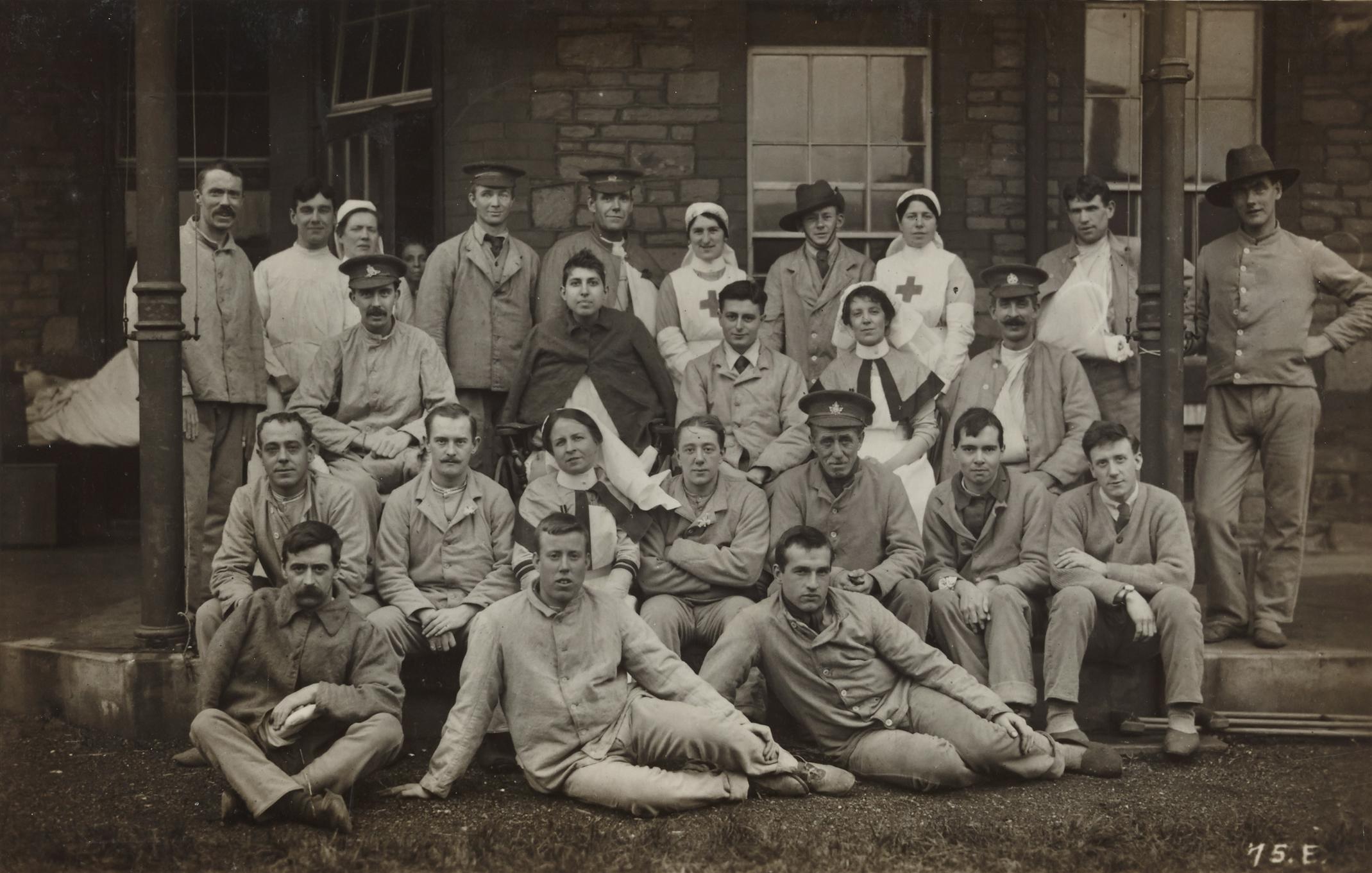
Weaver shared his rum with them. He passed out and woke up on his back, feeling himself suffocating in the mud. He crawled out of the trench, this time in daylight, and reaching home was immediately placed on a stretcher and carried out. 'I was full of a sense of immense relief,' he wrote.
One hundred and forty days after Weaver left the Somme battlefields the offensive ended. By then more than 1 million men had been wounded or killed. The British and French Forces were victorious over the German army. Together they had captured only 9.7 kilometres of territory.
One of only 200 men from his regiment to survive the battle, Weaver was critically injured at the Somme. In a letter to his father he wrote that he would not lose his arms, 'but it will take a very long time to heal'. Twelve operations and two and a half years spent at an English hospital gave him back partial use of his hands.
Before the war Weaver trained as an artist at the Camberwell School of Arts. Together with fellow students David Jones and Frank Medworth, he saw and was inspired by Roger Fry’s 1910 Manet and the Post-Impressionists exhibition in London.
For Weaver, like so many young men, the Great War was a call to action and he had enlisted as a rifleman in the army, for a regiment known as the London Territorials. He was mobilised in August of 1914 and served at the Western Front for one year and nine months. He had become attached, as a Lance Corporal, to the Signal Section of his regiment. Weaver spent four days in front line, four days in support and four days just behind the line, ‘never out of gun fire at all’.
The experience marked him for life. He was unable to forget the piercing screams of a soldier who was left in a trench for half a day until he was carried out at night ‘peppered all over with bits of metal from an enemy rifle-grenade’. Alongside him in the trenches a rifleman died 'disembowelled by a rifle-grenade from the enemy trench. He died screaming and trying to hold in his intestines.'
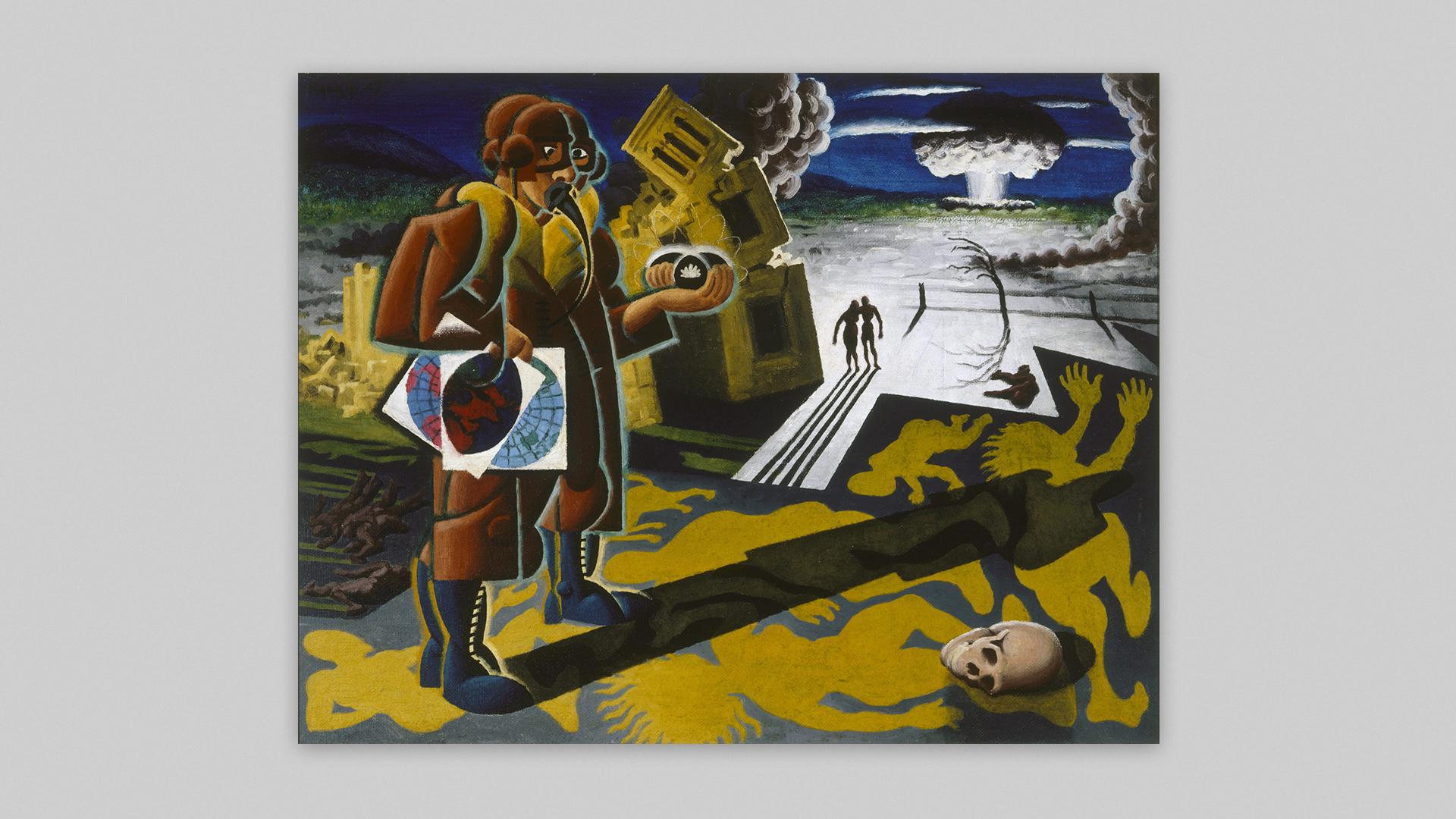
The war not only changed the way Weaver worked as an artist, but also his entire understanding of art. An ardent pacificist, he made the futility of warfare and the dangers of human ideologies a constant theme in his art.
Weaver moved to Australia in 1935 with his wife and three children. In an unpublished essay on the ‘Impact of war on art in Australia’, he argued that artists could not continue to churn out paintings as luxury commodities or tokens of prestige in the wake of the two world wars, for art’s ‘artificial and objectionable exclusiveness’ had been challenged.
Art was now required to play its role in making sense of what had happened and ensuring that it would not be repeated. His art was later criticised for being too ‘preachy’. One reviewer said he was ‘burdened by a cumbersome reasoning mind’.
Others, however, saw in Weaver a passion and ability unrestrained by his war wounds. 'My immediate impression was of a quite extraordinary male beauty – fine-boned, bearded visage, with clear untroubled eyes and a ready smile,' the Australian author and playwright Morris West wrote of him.
'One sensed immediately that this was a man at peace with himself and his world. It was only later - and with a certain shock - that I realised how greatly he had been maimed in World War. He had no elbows. His lower arms were like flails swinging free. His shoulders and wrists and some of his finger joints were fused. He had only partial use of his left arm and none at all of his right. Yet he painted and painted and painted with a serene concentration and total spiritual involvement.'
Weaver's 1947 painting Atomic power, held by the Art Gallery of New South Wales, shows the courage of the artist's conviction. A pilot in flight suit, holding glowing orbs in one hand and maps of the world in the other, stands on a carpet patterned by writhing bodies. A skull lies toppled beside him. In the background, a nuclear explosion at sea casts a pallid white light against two emaciated figures trying to escape the blast. It is a dystopian vision of the dangers of the nuclear world.
Weaver stopped oil painting in 1972 after a series of strokes reduced the use of his painting hand. In 1976 the Art Gallery of New South Wales was the first public gallery to survey his work in a project exhibition.
◼
Dora Ohlfsen:
the reluctant fascist
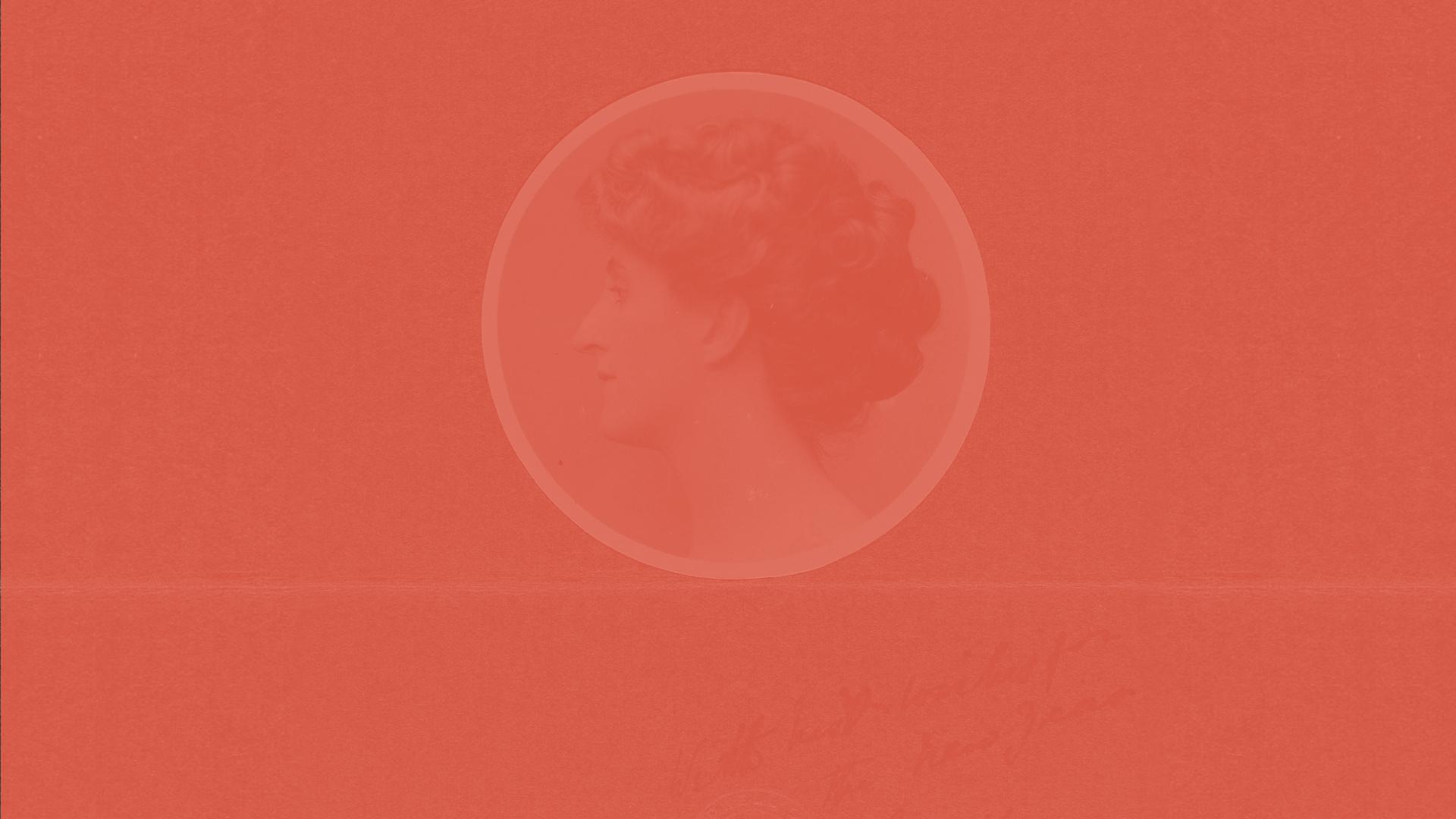
On 20 November 1915, the Australian sculptor Dora Ohlfsen penned a letter to her friend, recently retired politician Ambrose Carmichael, from her studio in Rome.
In it she described a city consumed by talk of war. ‘The invasion of England… seems to be regarded here as a certain probability at the present moment,' she recalled. ‘The Germans seem absolutely confident of winning, and there is not a foreign soldier, excepting prisoners, on German soil ... Rome is full of German spies, and crowds of them enter England disguised as Belgian refugees.'
Although her fears of an invasion of the United Kingdom proved to be unfounded, Dora’s account of the rising tension in Rome was quite real. Italy had entered the war only six months earlier, and what would become a 12-battle campaign against Austria-Hungary along the Isonzo River was taking a huge toll on young Italian soldiers.
Dora too was beginning to feel the impact of the war on her personal and professional life. ‘In time of war art is the first thing people cut out of their daily needs.' She continued, ‘I shudder to think what will become of us all. Men artists can at least be killed, women can’t. In six months there will be only women and crowned heads left. Even bishops and Labor members shed their blood.'
Dora Ohlfsen was born in 1869 in Ballarat, Victoria. As a young woman she showed great promise as a pianist, and at the age of 23 left Australia to study music in Berlin. Though talented, her musical career was cut short when she developed neuritis of the arm, and temporarily lost the use of one hand. Then, as The Register reported in 1922, ‘too proud to become a mediocre performer, Miss Ohlfsen abandoned the pianoforte; and it will be seen how much such a sacrifice cost from the fact that she refused to play a note after wards.'
Abandoning her musical studies, Dora moved to Russia and then Italy, where in 1902 she began studying with artists of the French Academy, including the medallist Pierre Dautel. After setting up a studio in Rome, she became known as a sculptor and medallist. In 1908 the Sydney Morning Herald reported that as a relief portraitist ‘she is a most successful exponent, and orders crowd upon her. British and American visitors are her chief customers, though she works also for the foreign nobility and the clergy.'
Italy’s entry into the First World War brought some privations to the streets of Rome. In letters written to Gother Mann, then director of the Art Gallery of New South Wales, Dora wrote that prices were high, some people could no longer afford to heat their houses and life for many was a misery:
‘These are anxious times and as the theatre of war draws nearer here (where I am) so the anxiety grows greater.'
Prior to the war Dora had trained as a nurse, which allowed her to serve in a voluntary capacity at the Italian Auxiliary Hospital in Rome, which was almost directly opposite her studio, and later in Venice. Serving as a nurse brought her closer to the effects of the war and, through her work in the arts community, she became conscious of the impact of the war on Italian society and culture. ‘There is a great need of nurses and now a branch of the English Red Cross Society has come to Rome and English women are asked & go through a Voluntary Aid course,' she recorded. ‘Great preparations are being made for bringing English wounded to this country and one sees crowds of English, French and Serbian officers and soldiers about ... I also told you that when I first [contacted] Paris I found my founder was dead and my reducers for medals – all killed. The number of artists killed too is appalling.'
While working in Rome, Dora had been maintaining her links to Australia. She had been commissioned by the trustees of the Art Gallery of New South Wales to design a bronze frieze to go directly over the entrance door to the Gallery. The major feature was a Greek chariot race, but Dora had reservations about the side panels. The director wanted portraits of Leonardo and Michelangelo to accompany the race, but the strong-willed Dora opposed them as anachronistic.
In any case, Dora was unable at the time to cast the bronzes due to the high costs of materials because of the war. This became a source of tension between her and the Gallery, which she felt deliberately neglected her demands. Writing to Mann, she asked whether he could:
‘really imagine that I have sums of money lying about in war time to spend like that on my own account. I am not Mackennal at whose feet Australia pours mines of liquid gold… by the way, how many photographs did Countess Gleichen send out of that amateur abortion of hers which adorns the walls of the art gallery?’
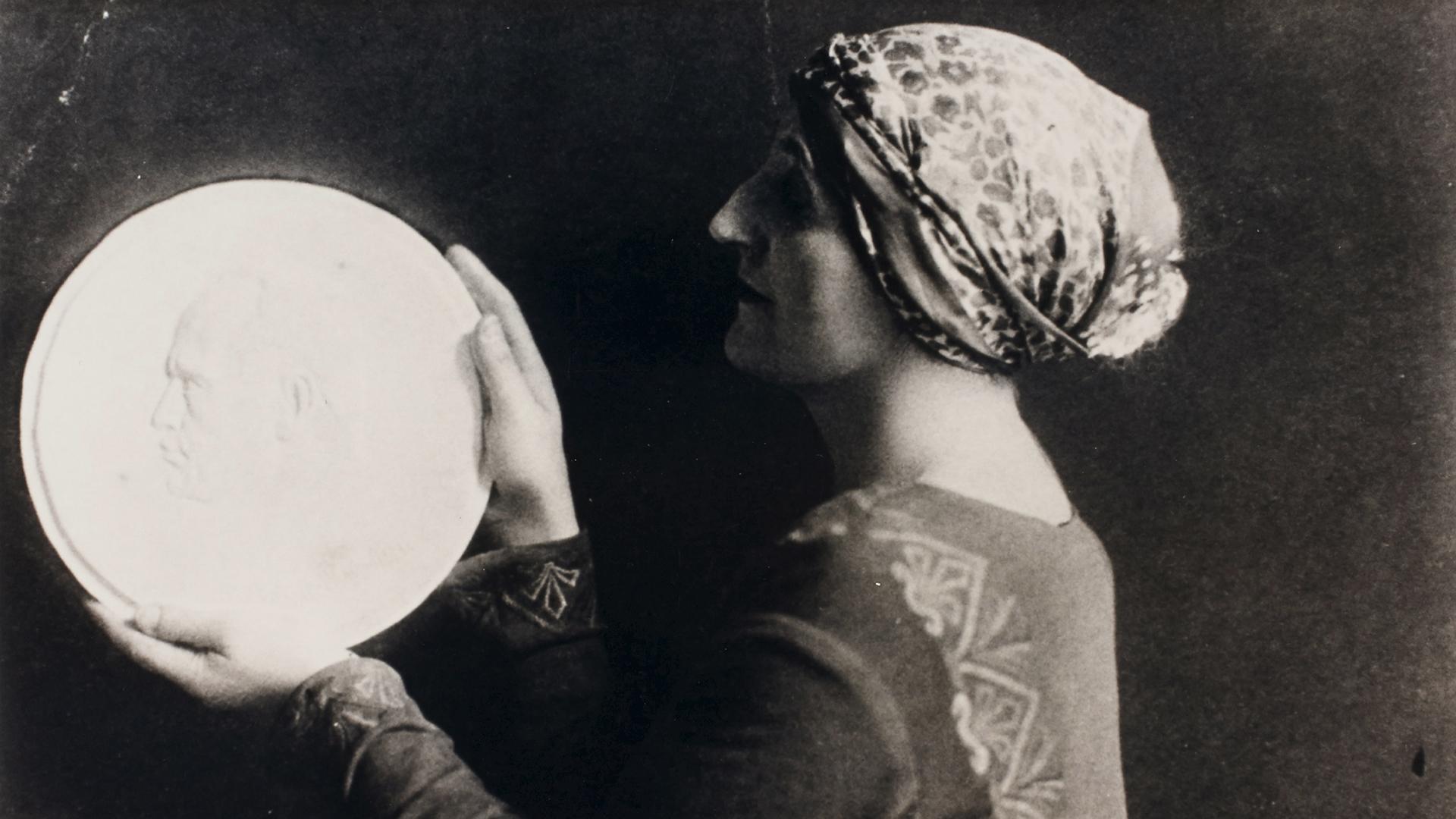
But far from ancient Greece, it was the subject of the Anzacs that inspired Dora’s greatest wartime work. Greatly moved by the tragedy of Gallipoli, she began work on a series of commemorative medals honouring Australian soldiers.
‘I am just completing a medal dedicated to the Australians fallen in Gallipoli. However, it could be dedicated to those fallen in this war in general. If it should be put to any use by the Government I should like half of the proceeds to go the mutilated. I have made "Australia" and her son very young — representing as they do the youngest country and the youngest army.'
The Anzac Medal was a striking and patriotic tribute that was reviewed with great enthusiasm. The Sydney Morning Herald described it as representing ‘the figures of a proudly pitying woman, typical of Australia, bending over her dead son as she binds the youthful brows of the sleeping form with laurels. The modelling is marked by delicately vivid touches, and is charming in the humanity of its appeal.' The Register wrote that ‘the woman’s features… convey an impression of the sublime yearning of womanhood over youth, full of promise, laid low "on the altar of heroism".'
In the aftermath of the war, Dora devoted herself to the commemoration of Anzac. In 1919 she sent five hundred Anzac medals back to Australia and she herself returned briefly to promote the medal in 1922. While in Melbourne she lectured on Italian Futurism, which she admired and described as ‘the sweeping away of every canon of art in the academic sense in order to destroy the vices into which modern art had fallen.'
On returning to Rome that year, Dora would witness more upheaval in the city. Mussolini’s Fascists were on the march through Italy. ‘We have been passing through many thrilling times here, no less than a revolution with a king the head of it,' she wrote. ‘We had been hearing about the threatened 'march on Rome' of the Fascisti without paying much attention, but everybody began to sit up and notice when 30,000 men marched into Naples and held a convention there on October 24.'
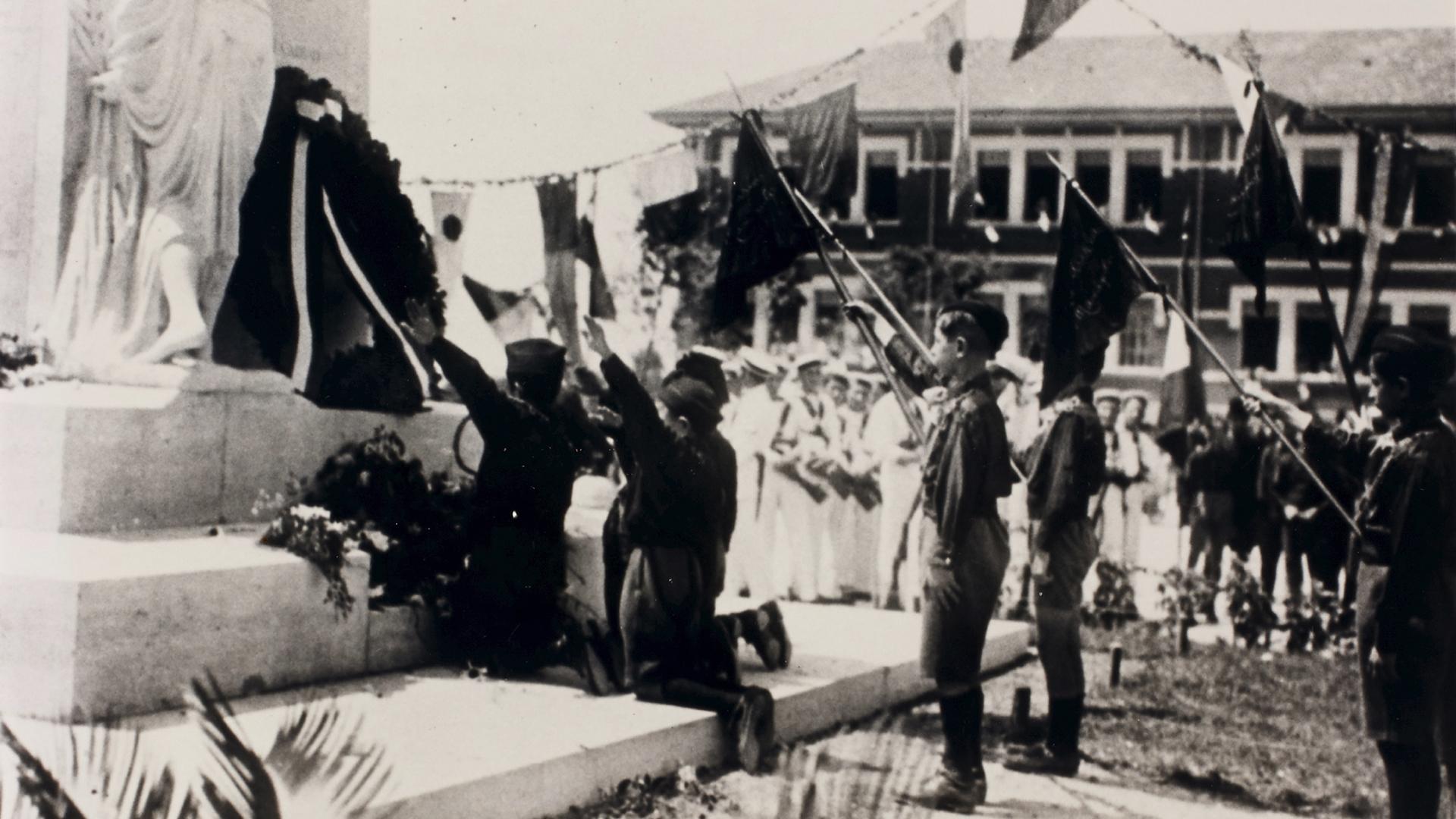
Dora’s association with the Fascists in fact went beyond merely observing them in parade. In 1924 she was commissioned by the Fascist Italian Government to produce a war memorial at Formia on the Mediterranean coast of Lazio, titled Sacrifice. She produced a twice life-sized sculpture of a muscled and shirtless young Italian soldier, both arms reaching towards the heavens. She was later commissioned to create a relief portrait of Mussolini himself, which was well received.
Having made commemorative art works for two countries, Dora’s contribution to remembering the First World War was unique, particularly since during her lifetime those two countries would become enemies in another world war. Dora did not abandon her patriotism for Australia, and in fact she remained fiercely protective about the public commemoration of Anzac.
She was particularly scathing about the construction of the Anzac Memorial in Sydney’s Hyde Park in 1934, delivering a thinly-veiled accusation of plagiarism to sculptor Raynor Hoff:
‘I’m perfectly shocked at the war memorial they have erected in Sydney done by stonemasons I hear. I saw the photos in ‘The Home’... you will note that the nature of the scaled soldiers in a row is nothing but an illustration of ‘Latrine Parade’ so much described in all the war books. Added to that people write to me that there is to be a centrepiece of a naked woman strung up on a cross!! And the authors of this abomination have the effrontery to call it ‘Sacrifice’ stealing the title of my war memorial in Formia?’
‘Tell me this,' she continued, ‘is the crucified woman meant to commemorate the Lousberg brothers (German) in Belgium where women of every task, age and class were requisitioned and is she meant to remind the Diggers of their friends occupation of allied countries? A Latrine Parade and a naked woman on a cross! Is this our Australian mentality or merely a group of Sadists (artists and committee) giving full play to their imagination? For this form of degradation in the name of art it seems Australia has tens of thousands of pounds to expend!!! The person who wrote to me about the naked woman on a cross mentioned that the Roman Catholics had protested. Don’t forget to tell me all about it.'
Dora could not have foreseen Fascism’s role in bringing about another war, but her work on the war memorials of two countries highlights the complex politics of veneration and commemoration. Indeed, the stories of Cecil Bostock and Weaver Hawkins also ask us, looking back a century after the First World War, to question the consequences of war and the role of artists in transcribing and preserving the experience of battle.
◼
